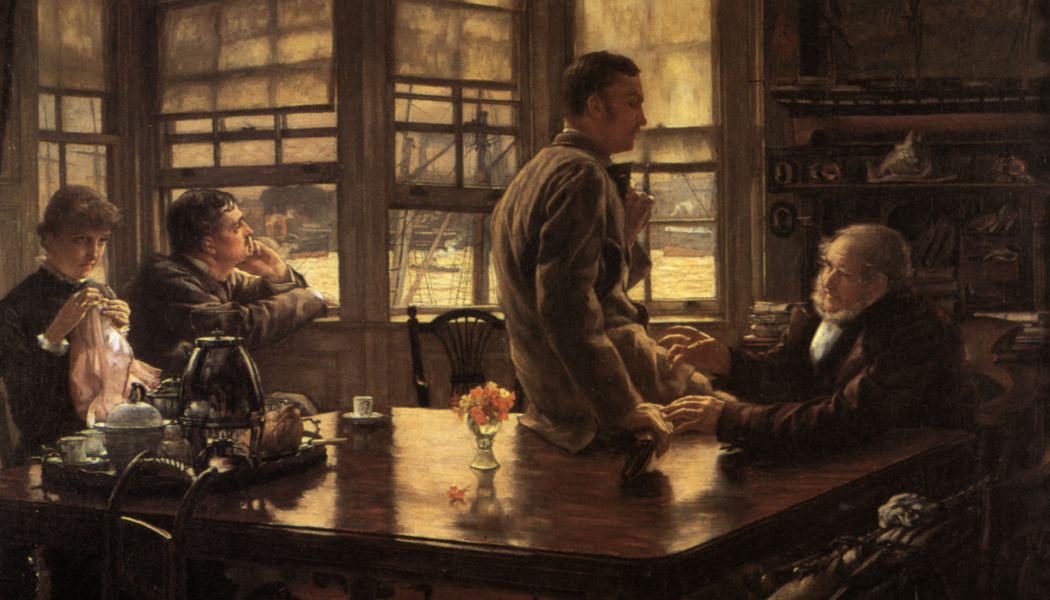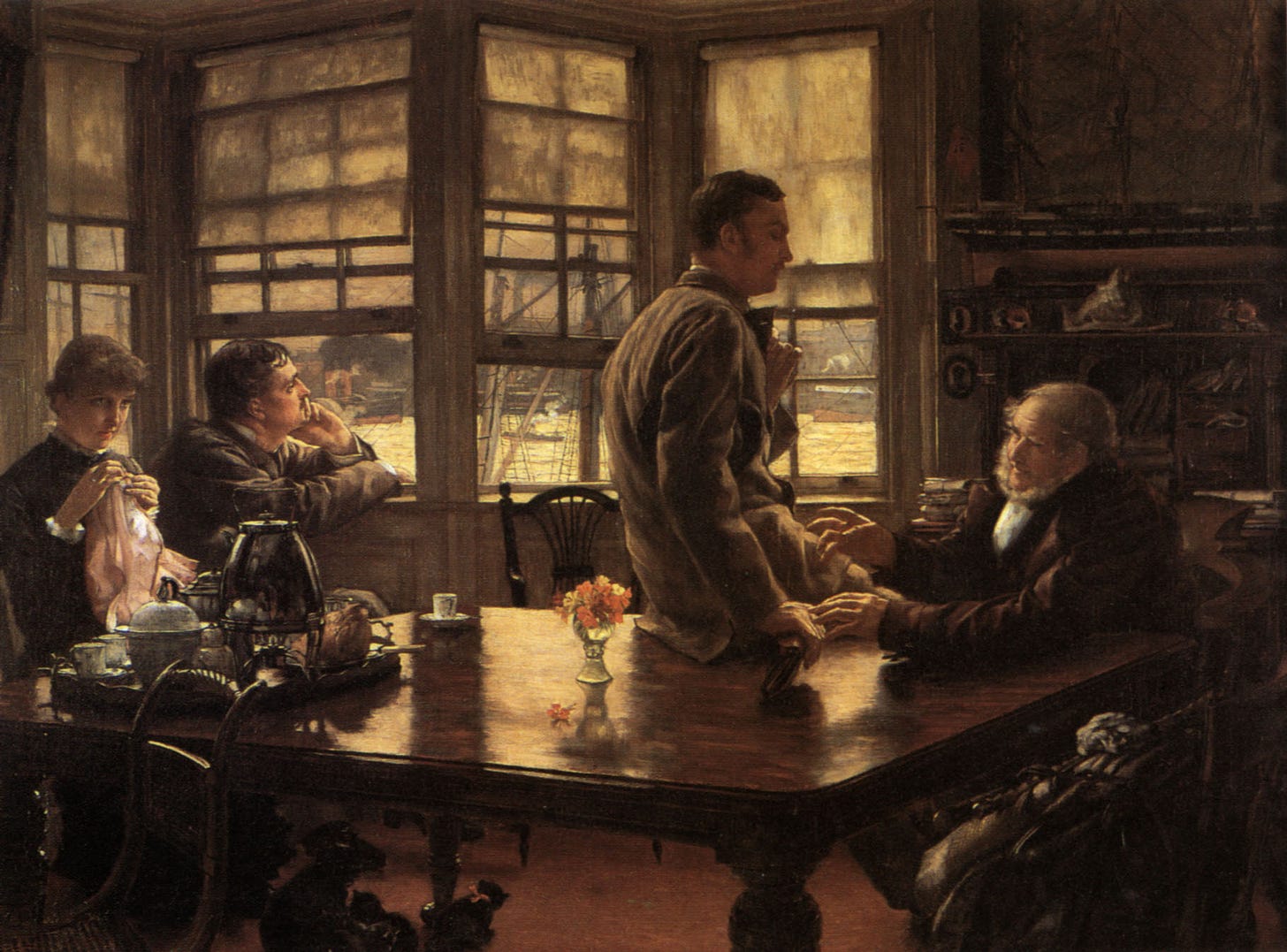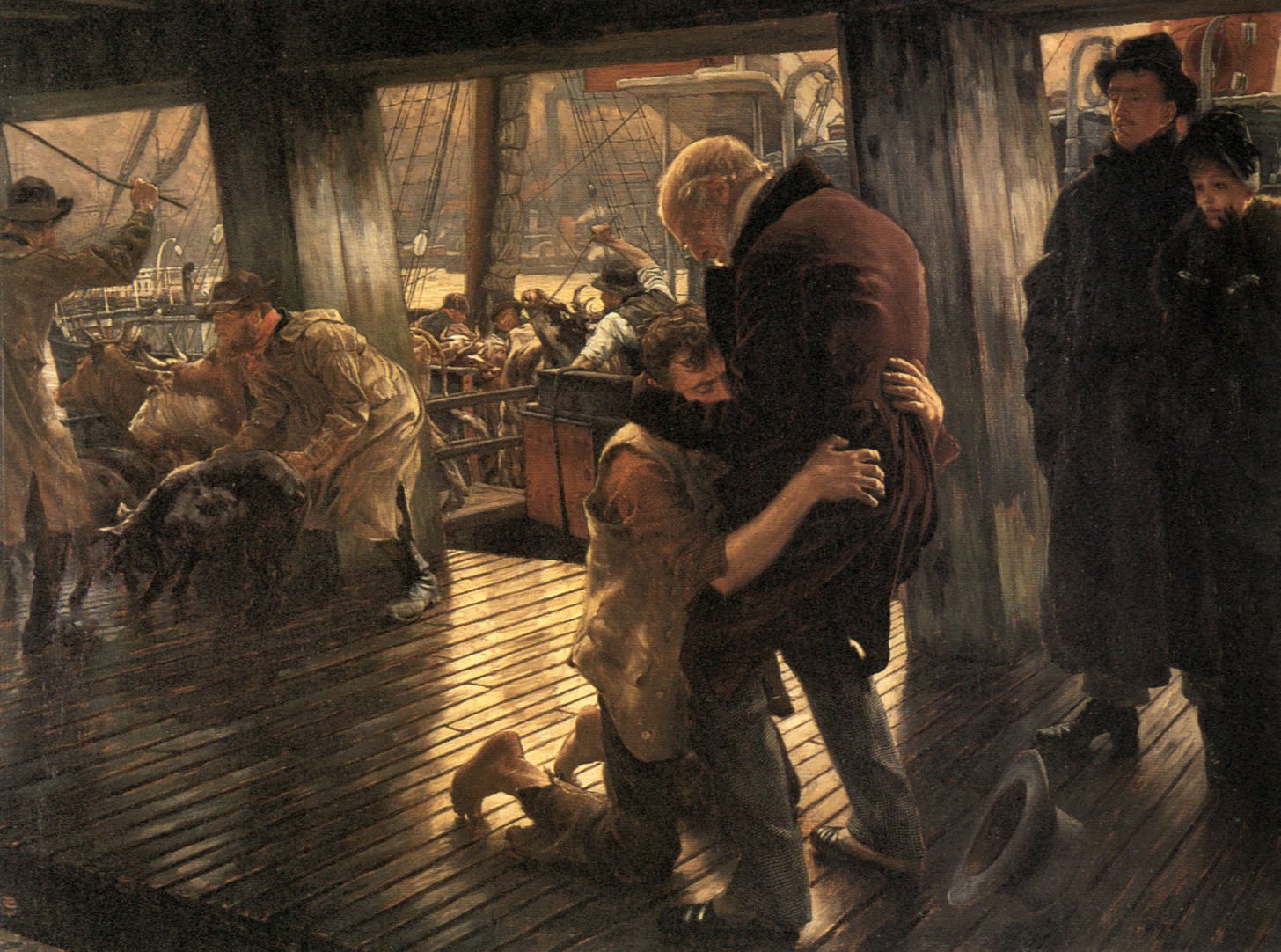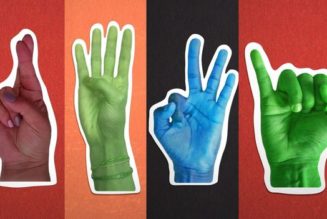I love the small details in these images. First, in “The Departure” notice the elder son is disinterested in the pain his father is undergoing by losing his younger son. He is in his father’s house physically, but not in spirit—half of his body is outside the house and not near his father as it should be.
Notice the hands and the eyes of the father and son. The father gazes lovingly at the son’s face. The son, however, gazes straight downward at what is in his own hand. The father places his hand on top of his son’s hand. The son places his hand on a billfold–his worldly inheritance. With his other hand, the son opens his coat to place the billfold in his pocket. Thus, the father is shown as being able to reach out to his son with open arms and open hands because he cares only for his son. The son is not able to return this gesture because his hands are full of what concerns him: worldly possessions.
Contrast this with the image of “The Return.” Son and father are now able to grasp each other with open hands. Also, notice how in the first image, the son is above the father—he thinks the father is beneath him. In the second image, the son is on his knees to intentionally place himself below the father. Beautifully though, the father doesn’t stand upright, he bends down to the son to embrace him and puts the son’s head on his heart.
Look at the ground in the corner of “The Return.” Notice the father’s hat has just flown off his head. Why? Because “when he was yet a great way off, his father saw him, and was moved with compassion, and running to him fell upon his neck, and kissed him.” The old man with white hair has run faster than he has in years. As fast as he used to run to catch his son when he was a little boy. He would remember the games of hide and seek he played when his son was little. He was always joyful to find his son in those games, but never more than now. Because “he was lost, and is found.” That is why he he ran so fast that his hat blew off. He is a fine gentlemen, so it would be improper for him to be seen outside without his hat, but love cares nothing for social standing if it inhibits the lover from reaching their beloved.
The son’s clothes are tattered and torn, he is dirty, and unshod. Society would have the father scorn him. Indeed, the son himself says “I am not now worthy to be called thy son.” The elder son stands aloof, his hands in his pockets—not open to forgive his brother, but closed, hidden away, unmoved.
Notice that the elder son and the woman appear to be wearing overcoats—fashion appropriate to wear outside. The father though appears to be wearing the exact same coat he is wearing in the first painting. This coat is meant to be worn inside, though. Why would he be wearing an inside coat outside? Look back to the first image. The father’s house overlooks the docks. The father had been watching the dock. Every day. Every ship. Every passenger. “And when he was yet a great way off, his father saw him.” His father likely saw him on the deck of an incoming ship. Again, abandoning any thought of how others may view him, he runs to the dock, barely taking enough time to put on a hat. Compare the image of the son from the first to second paintings. In the first image, the son’s hair is short and impeccably well-kempt. In “The Return” his hair is long, curly and ragged.
And yet, for all that, his father is still able to recognize him from “a great way off.”
How? The lover always recognizes the beloved.
Though they be transformed, disfigured, scorned by the world, unknown even to themselves, the lover always recognizes the beloved.
Join Our Telegram Group : Salvation & Prosperity








